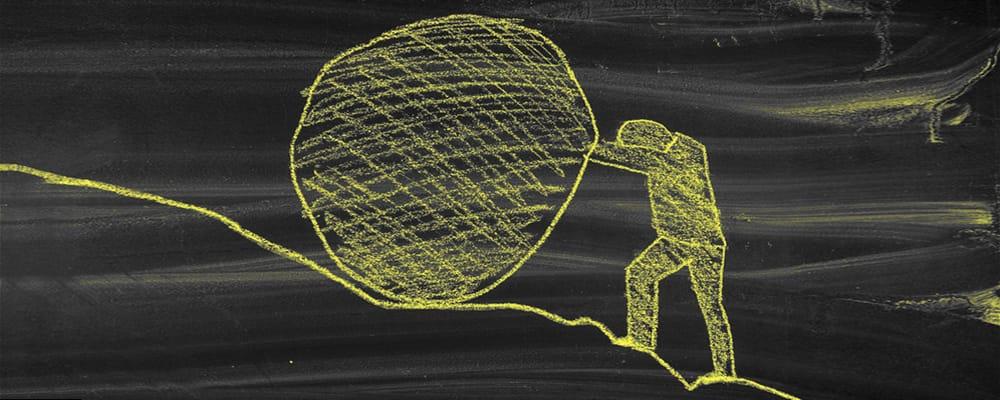
Does Minimalist UX Design Require Maximal Design Effort?
Short answer: usually. But it’s worth it. Here’s why.
A friend of mine, who works in a field completely unrelated to new technology, recently asked me whether the advent of simple digital products and voice interaction would make the profession of user experience (UX) design obsolete. Clearly, he was assuming that a simple-appearing product indicates a simple design process.
His is not a completely surprising question. Simple and elegant user experiences do appear to be effortless to achieve. The irony is that simple, elegant products often require more design effort than less-streamlined products — but the payoff in popularity can make the extra effort worthwhile. (Note the $900+ billion net value of Apple, the pioneer of tech-design minimalism.)
The Trap of Too Many Features
Take a product such as a wearable health tracker. Let’s say it has a two-button interface. Seems like that should be super easy to design, right? Not so fast. The design challenge lies in retaining value for users while at the same time figuring out how to make the user experience simple and elegant.
If the value of a product to users is low, no one will want it. But adding more and more value-rich features makes it difficult to keep the overall experience simple. “Featuritis”— the problem of including too many features — is the easiest way for a product to appear to have value. But it might actually have low usability, which then diminishes the value of each of its many features.
Techies (whatever that means anymore) have been content with featuritis in the past but even they are getting the bug for beauty. Even they are wondering what features are the most important to keep and what can be eliminated? Success is all about making good design choices. Minimalist design pushes a designer’s skill to the maximum. It can require more thoughtful research to deeply understand user behavior in a particular context, and it can take more iterations to get the design down to an elegant solution.
Level of Design Effort
Boiling down a design to create an elegant, valuable and usable product is hard work. But how much effort any design takes is really dependent on a number of factors. Some factors can increase the required effort while some economize. Here are some other key factors that influence any kind of design effort.
Economizing Effort
Precedence
Professions are built on historical precedence leading to best practices and the profession of UX design is no different. Once known design solutions are established for common design problems, “interface patterns” can be reused and result in a speeded up design process, like using a highly articulated construction kit.
Platforms
Platforms are the hard-coded versions of precedence and pre-solve many UX design issues for application designers. Interface patterns now have a look and feel already determined, although customizable within limits. Again, the design problem becomes how to arrange the platform widgets to accomplish a particular task.
Tools
Design tools such as Adobe XD and Figma by definition make a designer's job easier. They empower us with better and faster capabilities. And consider how a drag-and-drop web design tool such as Wix or Squarespace allows even a non-designer to create a functioning beautiful website in a few hours. There are a huge number of tools that help with creating graphics, wireframing, animating, sharing, communicating, etc. And the tools keep getting better.
Expanding Effort
Increasing expectations for good user experiences
Typically, the more time you spend on design, the better the results can be — and rising expectations for higher quality user experiences is pushing for that. We all now expect a certain level of frictionless elegance from new products. And our expectations will only continue to go higher.
Breaking in new technologies
New technologies such as voice interaction require breaking new ground in design practices rather than depending on the precedence of proven solutions. Design in this arena means developing new patterns and establishing the best practices. Trial and error while exploring new options and learning new skills takes extra time.
What you’ll notice is that even though there are factors that increase effort and factors that economize on effort, it’s the new technologies and cutting-edge products that require more design effort — even for the simplest-appearing designs. All those minimalist Internet of Things devices fall squarely into the requires-more-effort category. Extra time and effort are simply the costs for doing cool, commendable work.
Like this article? Check out more UX design content here.